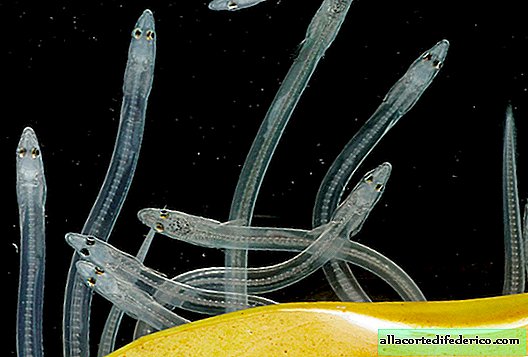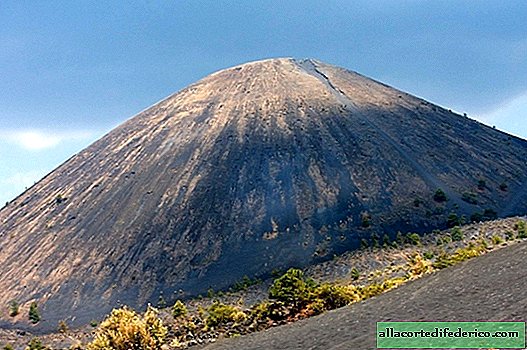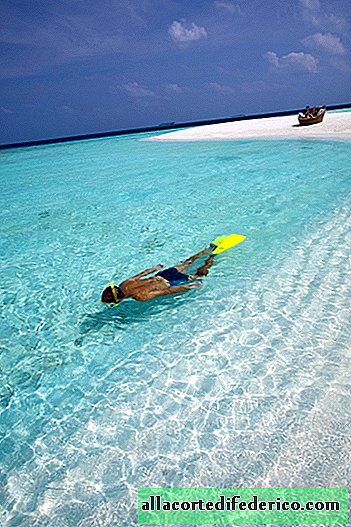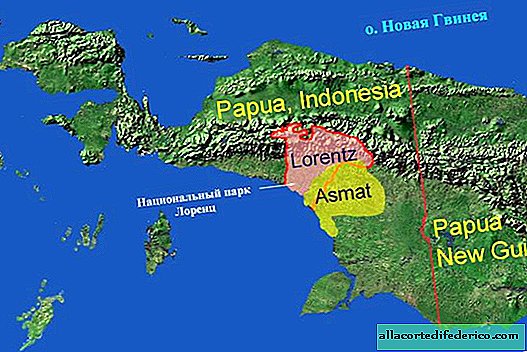European eel: a long way home
European eel has long been surrounded by riddles and secrets. Its unusual appearance gave rise to many legends about the origin. The larvae and fry of the eel have long been considered a separate species of fish, and the search for its spawning grounds was more like a detective story. This fish is even able to move on land, overcoming small distances between neighboring bodies of water.
But first things first. European or common eel lives in many reservoirs of Europe - from France to the north of the European part of Russia. It has a serpentine body reaching two meters in length. This is a valuable commercial species that has long been caught in rivers and lakes, and for a long time it was not possible to detect eel fry. Only adult individuals came into the field of vision of scientists. So the legend arose that eels are the descendants of viviparous fish, or they do not have eggs at all and breed in some way unknown to science. Until, finally, one very interesting discovery was made. Ichthyologists have found that a small, almost transparent fish called Leptocephalus brevirostris, which lives in the Atlantic Ocean, is nothing more than a European eel larva.
 In the photo: European eel larvae
In the photo: European eel larvaeThis forced scientists to resume the search for eel spawning places, but now not in fresh water, but in the ocean. According to the highest concentration of larvae, it was concluded that eels spawn in the Sargasso Sea, at a distance of 8,000 km from Europe. It is so far and unusual that it seems incredible. As it turned out, adult individuals spawn in this part of the Atlantic and females lay eggs at a depth of 400-1000 m. The eggs that were born, the same ones that have long been considered an independent species of fish, rise to the surface and the warm waters of the Gulf Stream carry them to Europe . This dangerous journey lasts three or even four years, but during this time the larva manages to grow to only 7-8 centimeters long and still has a translucent appearance. Rising upstream, they fall into rivers and lakes, where, according to various sources, they live from 6 to 12 years. An interesting fact is that mostly fresh females are found in freshwater bodies of water, while males live in desalinated marine areas. And so, when it comes time to spawn, the females descend into the seas and, having met with their gentlemen, continue their journey towards the Sargasso Sea, where they were born many years ago. According to ichthyologists, this is their last trip, because after spawning eels die.
 In the picture: the way of eel larvae from the Sargasso Sea to the shores of Europe
In the picture: the way of eel larvae from the Sargasso Sea to the shores of Europe Among other things, eels have another amazing feature: these fish can creep on land. Realized by the instinct of reproduction, eel females move towards the sea. But sometimes on their way there are dams that people built on rivers and lakes, or you need to move to a nearby body of water. Here they have to crawl on the ground. They do this, usually at night. Curving like a snake, they move overland. During this short period, they breathe through moist skin.
But why do acne cover such long distances, are there really no suitable places closer? Ichthyologists offer two versions of such an unusual life cycle, and both of them are rooted in the depths of millennia. According to one of them, eels have to travel such a great distance due to the drift of the continents. According to the theory of movement of lithospheric plates, the Atlantic Ocean is expanding, and Europe and North America are separated by about 2 cm per year. It turns out that from the beginning of the Tertiary period, the habitual places of spawning of eel have drifted thousands of kilometers from Europe, forcing these fish to cover such impressive distances. According to another version, the whole thing is the displacement of the Gulf Stream. In the last ice age, this warm current flowed much south, in the latitudinal direction from the Caribbean Sea to the coast of Spain. With climate warming, the Gulf Stream has shifted significantly to the north, thereby increasing the path that eel larvae travel to the north of Europe.

















